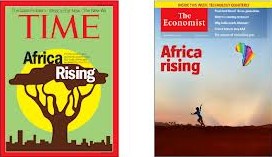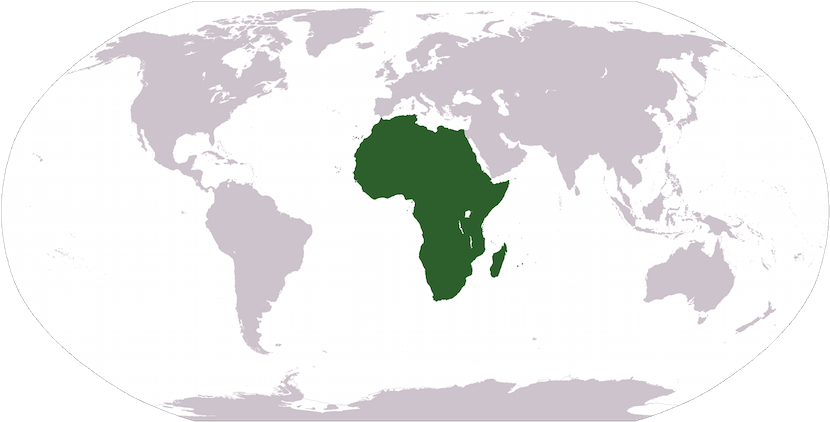The African growth story was earmarked by the Economist’s ‘Africa Rising’ edition. The continent as a whole was seeing growth figures of 7-8 percent for Sub-Saharan Africa a few years ago, and the magazine said it has the ability to follow in the footsteps of Asia. These figures have fallen off but are still forecast at 4-5 percent for 2015. The article below highlights the 2 big reasons for the falloff, an over-reliance on China and a lack of power. And despite these issues, Emerging Market investors like Mark Mobius are still adamant that the issues pale in comparison to the opportunities. One of the first casualties however is Sierra Leone, which in a story below, expects growth to fall 22% this year on the back of Ebola and Iron ore price slump. – Stuart Lowman
by Mike Cohen and Rene Vollgraaff
(Bloomberg) — Just a year ago, Africa was touted as the next investment El Dorado. Two decades of record growth, a rapidly urbanizing population of 1.1 billion, rising incomes and vast untapped mineral reserves would lead to the creation of a broad middle class, the theory went.
General Electric Co. and Marriott International Inc. announced African expansion plans, while buyout firms Carlyle Group LP and Helios Investment Partners set up funds targeting the continent. The region attracted $128 billion in foreign direct investment last year, up from $52.6 billion in 2013, according to accounting firm EY.
 Now a slowdown in China, Africa’s largest trading partner, a commodity price rout and a power shortfall are separating the losers from the winners. The MSCI EFM Africa Index of shares has dipped 18 percent this year, five percentage points more than a gauge of stocks across 24 frontier markets. Twenty-two of 24 African currencies tracked by Bloomberg have lost ground against the dollar as the Federal Reserve prepares to raise rates.
Now a slowdown in China, Africa’s largest trading partner, a commodity price rout and a power shortfall are separating the losers from the winners. The MSCI EFM Africa Index of shares has dipped 18 percent this year, five percentage points more than a gauge of stocks across 24 frontier markets. Twenty-two of 24 African currencies tracked by Bloomberg have lost ground against the dollar as the Federal Reserve prepares to raise rates.
To Marlon Chigwende, sub-Saharan Africa managing director for Carlyle, the world’s second-largest private-equity firm, the message is simple: Africa is not a country. “There are individual forces at work within each of the 55 countries that make up Africa,” he said. “There will continue to be investment opportunities.’’ The combined economies of sub-Saharan Africa should expand 4.4 percent this year, the International Monetary Fund said in July. That’s one percentage point less than predicted a year earlier and below the 5.4 percent average of the last decade. The peak was 7.1 percent in 2007. The data is driven largely by Nigeria and South Africa, which together account for 55 percent of the 48 sub-Saharan African nations’ gross domestic product. A collapse in oil prices saw growth in Nigeria slump to 2.4 percent in the second quarter, the slowest pace in at least five years. South Africa’s economy contracted by an annualized 1.3 percent as power shortages curbed output.
Africa “is rising” mantra is spluttering…From Nigeria to SA to Angola, economies wobbly as govts scramble to make sense of China’s mess — Sure Kamhunga (@SureKamhunga) September 15, 2015
“It’s about the weakness of the giants,’’ said Akinwumi Adesina, president of the African Development Bank. He spoke from Abuja, Nigeria’s capital. “The countries Africa exports to have slowed down significantly.”
Bright spots remain: Democratic Republic of Congo is expected to be Africa’s top performer this year, forecast by the IMF to grow by 9.2 percent, followed by Ethiopia, with a projected expansion of 8 percent. Congo is emerging from a decade of civil war, while Ethiopia is opening up to foreign investment and improving its transport links.
Besides Nigeria, the commodities rout has hit oil producers such as Angola and Ghana, as well as Zambia, the continent’s second-biggest copper producer. The price of Brent crude has plummeted 51 percent over the past 12 months, while copper has slumped 22 percent on the London Metal Exchange.
“Investors that look for risk-adjusted returns will continue to look at the continent, but they’ll certainly have to temper their expectations,” said John Mackie, head of Johannesburg-based Stanlib Asset Management’s Pan-African Investment portfolios. The possibility of U.S. interest-rate increases and China’s failure to curb its stock slump are having “a massive impact.”
Read also: Africa Rising under serious threat with end of “Golden Decade” of commodity-driven growth
Mark Mobius, the Franklin Templeton Investments money manager who’s been investing in emerging markets for more than four decades, remains optimistic.
“The growth scenario is still excellent,” he said in an e- mailed response to questions. “We do not want to scale back our investments. The problems are here to stay but they pale beside the opportunities.”
General Electric, Marriott, Carlyle and Helios haven’t signaled an intention to curtail their African expansions.
Shoprite Holdings Ltd., Africa’s largest retailer, is among companies benefiting from a consumer spending surge: Its supermarket sales outside South Africa, its home base, grew 13.5 percent in the year through June. The company has outlets in 15 African nations, including the Democratic Republic of Congo, Angola, Nigeria and Uganda.
“There are countries that continue to do well,” Christo Wiese, Shoprite’s billionaire chairman, said in an interview. “Taking a medium-term view, you ignore Africa at your peril.”
Read also: Martin Ganda: The Trillion Dollar African opportunity
Most African countries are net commodity importers and should benefit from lower prices, according to Mark Bohlund, an economist with Bloomberg Intelligence in London. Ethiopia and Kenya, which are making progress on building infrastructure, stand to gain while exporters Angola and Nigeria will grow less, he said.
Topping the list of Africa’s infrastructure concerns is a power shortfall. An estimated 600 million Africans lack access to electricity. While about 95 energy projects worth more than $50 million were being built in Africa last year, most are nowhere near completion, according to a study by Deloitte LLP.
“Africa should’ve been growing at 7 or 8 percent if it had sorted its power out a decade ago,” said David Cowan, an Africa economist in London at Citigroup Inc. Even given sound economic fundamentals in many countries, “The Africa-rising narrative was just an oversold story.”
From Bloomberg by Silas Gbandia
(Bloomberg) — Economic output in Sierra Leone will probably contract 22 percent this year as its mining and agricultural industries face the dual pressures of recovering from an Ebola outbreak and a commodity-price slump.
The deadliest-ever outbreak of the illness has killed more than 11,000 people, mostly in the hardest hit countries of Sierra Leone, Guinea and Liberia, since December 2013. The three West African governments estimate $8 billion is needed to rebuild their economies after that epidemic curbed business productivity and delayed investment while farmers fled their fields and mining companies shuttered projects.
“For 2015, the economy is very, very weak,” said Samuel Turay, head of Sierra Leone’s economic and labor statistics, in an interview on Sept. 10. “Mining activity, especially iron ore, is zero.”
The economy grew 4.6 percent last year, he said.
Two years ago before the Ebola outbreak, the country was among the fastest growing economies inAfrica, expanding at more than 20 percent, because of exports of iron ore, used to make steel, according to the International Monetary Fund. The iron- ore industry has been losing capacity as some of the country’s biggest producers ceased operations.
Mines have stopped exporting, which means “they aren’t paying their monthly royalties” and income tax is falling because of staff cuts, Mohamed Bangura, corporate affairs manager at the revenue authority, said on Sept. 9.
Iron ore is down 20 percent this year, after falling 44 percent last year.
Rebounding Industry
Economic growth is expected to recover next year to 1 percent provided that agriculture and iron-ore ramp up again, Turay said. Farming accounts for 45 percent of the country’s gross domestic product, while iron-ore shipments provide about half of all exports.
The weakening currency has fueled inflation, which accelerated to 8.1 percent in July and is forecast to reach “double digits” by year-end, said Turay. The leone, as the local currency is known, has declined 9 percent against the dollar since the start of the year.


